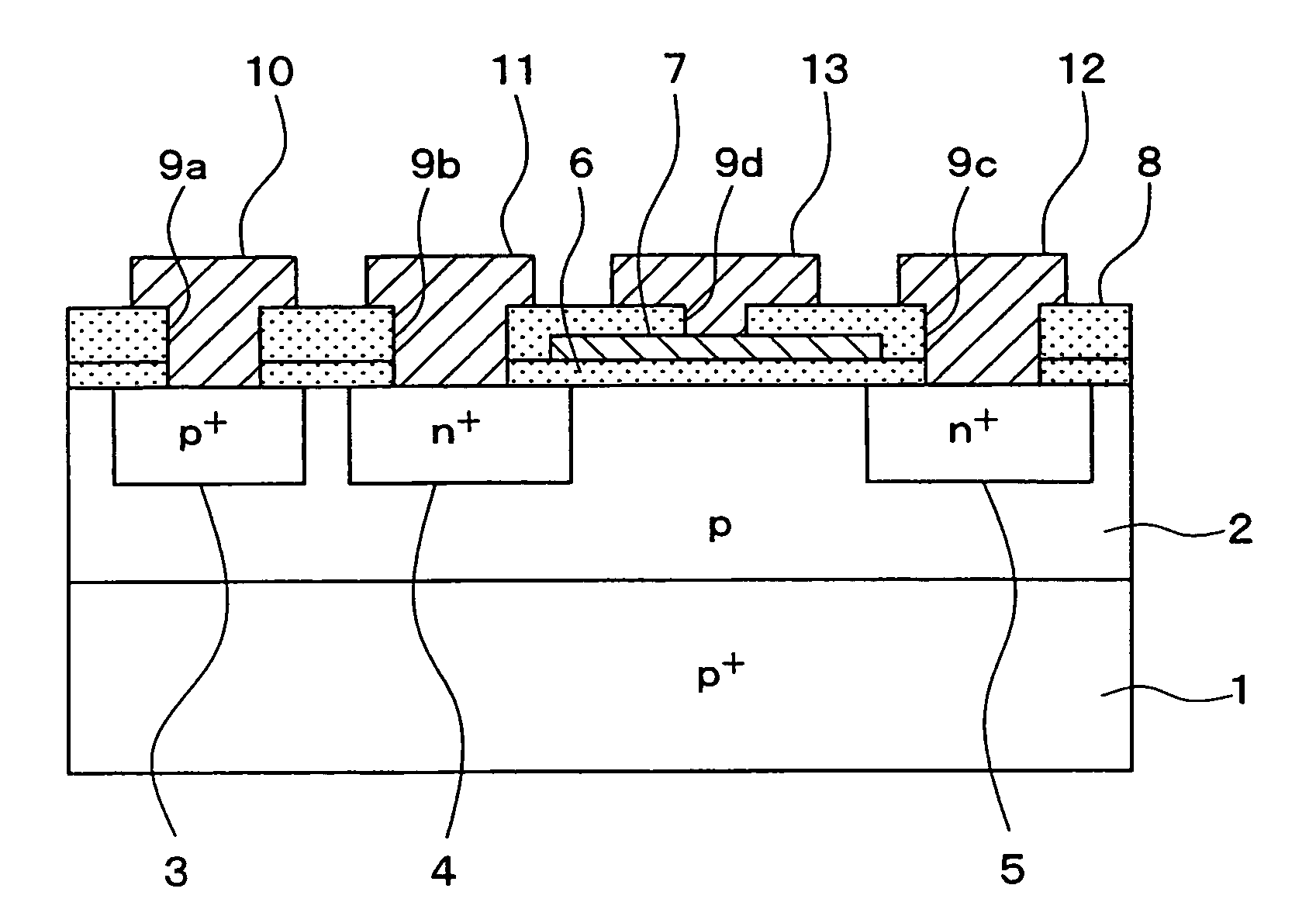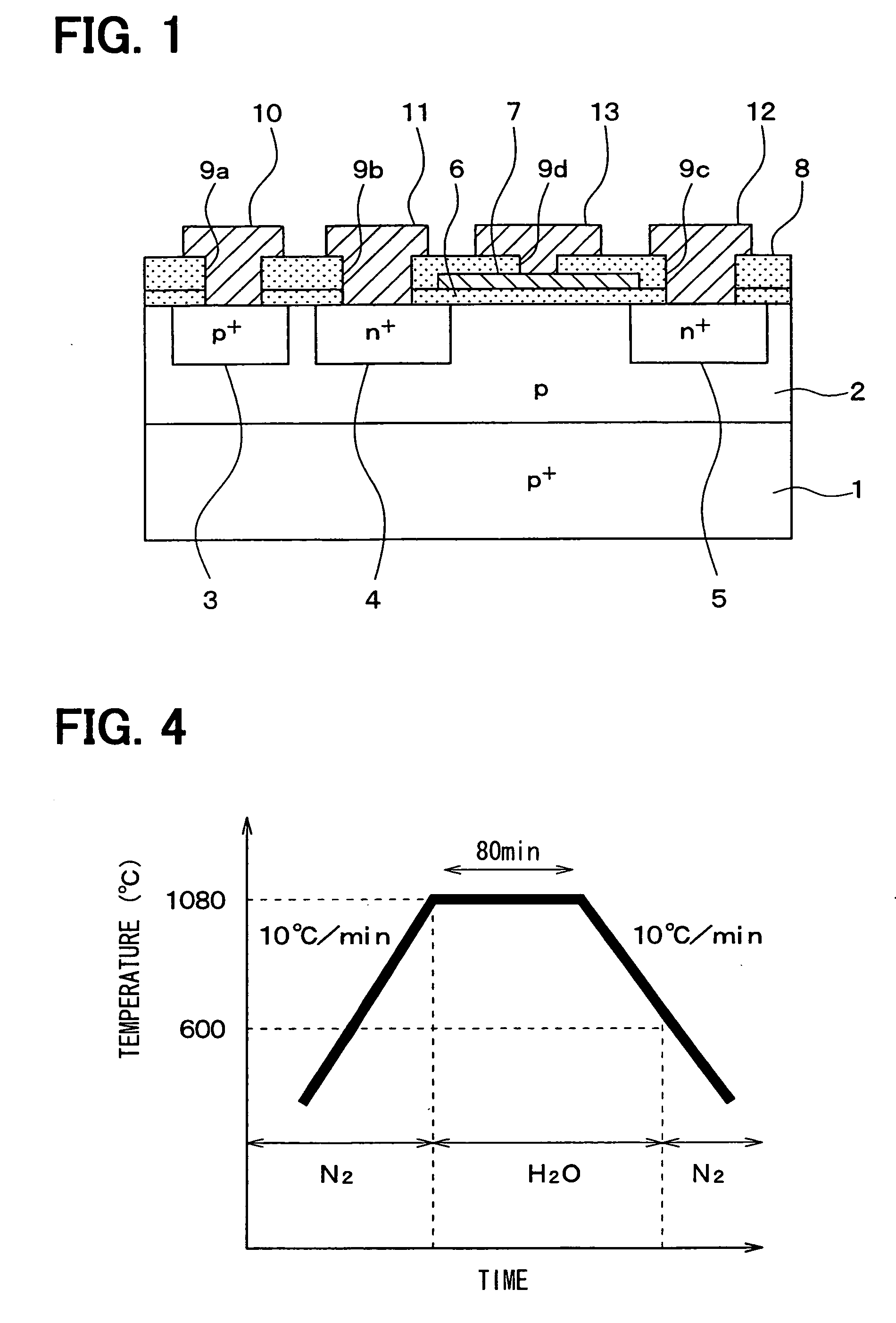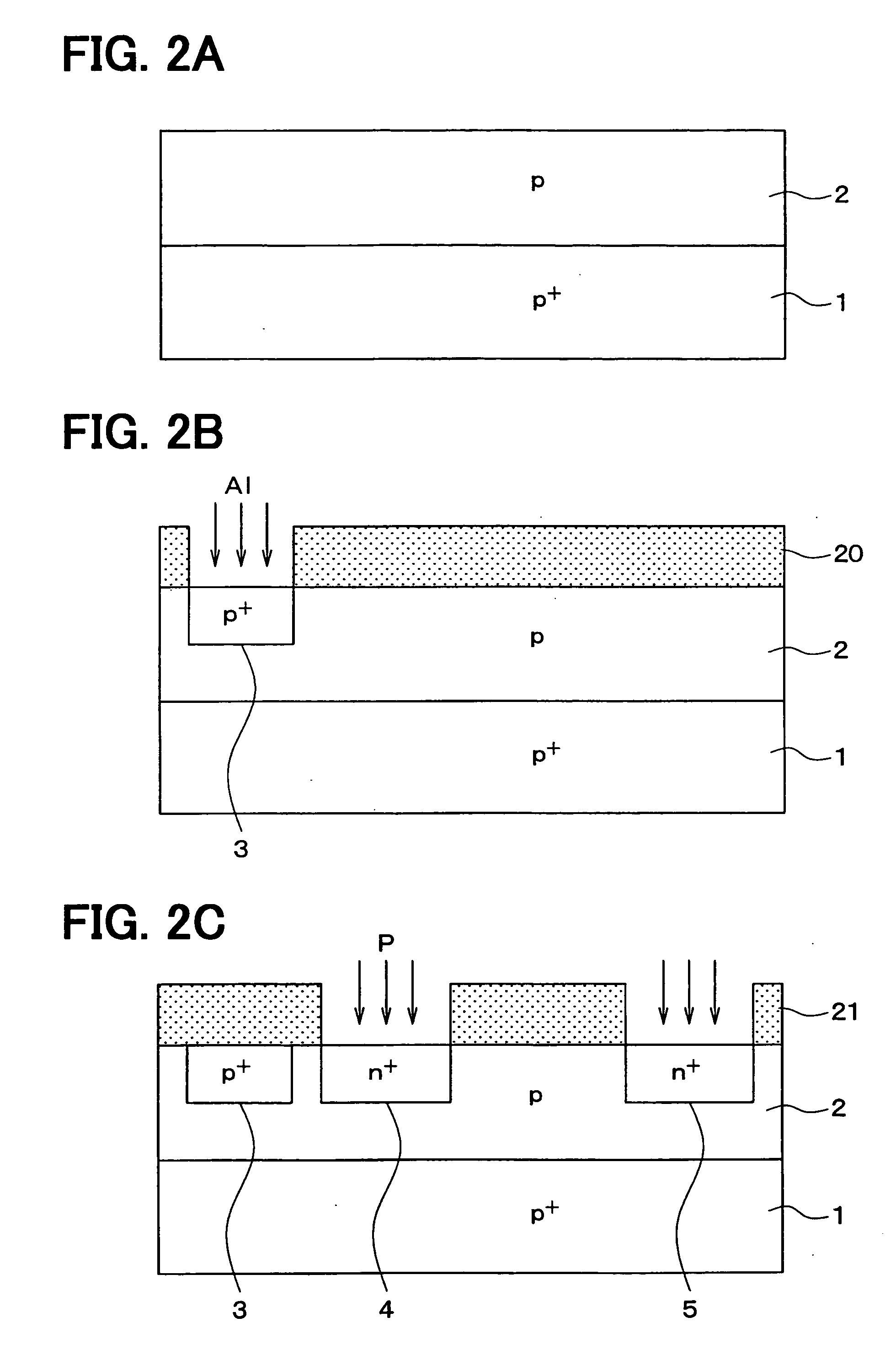Silicon carbide semiconductor device having high channel mobility and method for manufacturing the same
a silicon carbide semiconductor and high-channel technology, applied in semiconductor/solid-state device manufacturing, semiconductor devices, electrical devices, etc., can solve the problem of insufficient channel mobility, and achieve the effect of high-channel mobility
- Summary
- Abstract
- Description
- Claims
- Application Information
AI Technical Summary
Benefits of technology
Problems solved by technology
Method used
Image
Examples
first embodiment
[0105] A first embodiment mode of the present invention will be explained. In this embodiment mode, one embodiment mode of the present invention is applied to an inversion type lateral MOSFET. FIG. 1 shows a sectional construction of the inversion type lateral MOSFET. FIGS. 2 and 3 show manufacturing processes of the inversion type lateral MOSFET shown in FIG. 1. The structure of the inversion type lateral MOSFET of this embodiment mode and its manufacturing method will be explained with reference to these figures.
[0106] As shown in FIG. 1, one face side of a substrate 1 of a p+ type constructed by SiC is set to a main surface, and a p / p+ substrate forming a p type base layer 2 constructed by SiC epitaxially grown on the main surface is used as a semiconductor substrate. For example, the substrate 1 of the p+ type is constructed by 4H—SiC and the main surface is set to face a, i.e., a (11-20)-plane and impurity concentration is set to about 533 1018 cm−3. For example, the impurity ...
second embodiment
Mode
[0126] A second embodiment mode of the present invention will be explained. In this embodiment mode, one embodiment mode of the present invention is also applied to the inversion type lateral MOSFET. However, this embodiment mode differs from the first embodiment mode in that the manufacturing method of the inversion type lateral MOSFET is partially changed. The structure of the inversion type lateral MOSFET, etc. in this embodiment mode are similar to those in the first embodiment mode. The inversion type lateral MOSFET of this embodiment mode will next be explained. However, the explanation will be made with respect to only different points from the first embodiment mode, and is omitted with respect to portions similar to those of the first embodiment mode.
[0127] The inversion type lateral MOSFET of this embodiment mode is manufactured by adding a manufacturing process shown in FIG. 6 to the manufacturing method of the inversion type lateral MOSFET shown in FIGS. 2 and 3 in t...
third embodiment
Mode
[0135] A third embodiment mode of the present invention will be explained. In this embodiment mode, one embodiment mode of the present invention is also applied to the inversion type lateral MOSFET. However, this embodiment mode differs from the first or second embodiment mode in that the manufacturing method of the inversion type lateral MOSFET is partially changed. The structure of the inversion type lateral MOSFET, etc. in this embodiment mode are similar to those in the first or second embodiment mode. The inversion type lateral MOSFET of this embodiment mode will next be explained. However, only different points from the first or second embodiment mode will be explained, and the explanations of portions similar to those of the first or second embodiment mode are omitted.
[0136] The inversion type lateral MOSFET of this embodiment mode is manufactured by changing the forming process of the interlayer insulating film 8 shown in FIG. 3C to processes shown in FIGS. 8A and 8B am...
PUM
 Login to View More
Login to View More Abstract
Description
Claims
Application Information
 Login to View More
Login to View More - R&D
- Intellectual Property
- Life Sciences
- Materials
- Tech Scout
- Unparalleled Data Quality
- Higher Quality Content
- 60% Fewer Hallucinations
Browse by: Latest US Patents, China's latest patents, Technical Efficacy Thesaurus, Application Domain, Technology Topic, Popular Technical Reports.
© 2025 PatSnap. All rights reserved.Legal|Privacy policy|Modern Slavery Act Transparency Statement|Sitemap|About US| Contact US: help@patsnap.com



